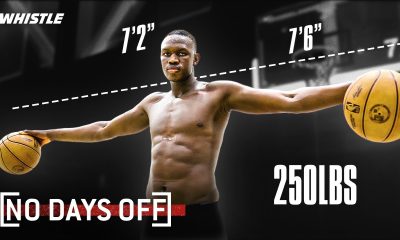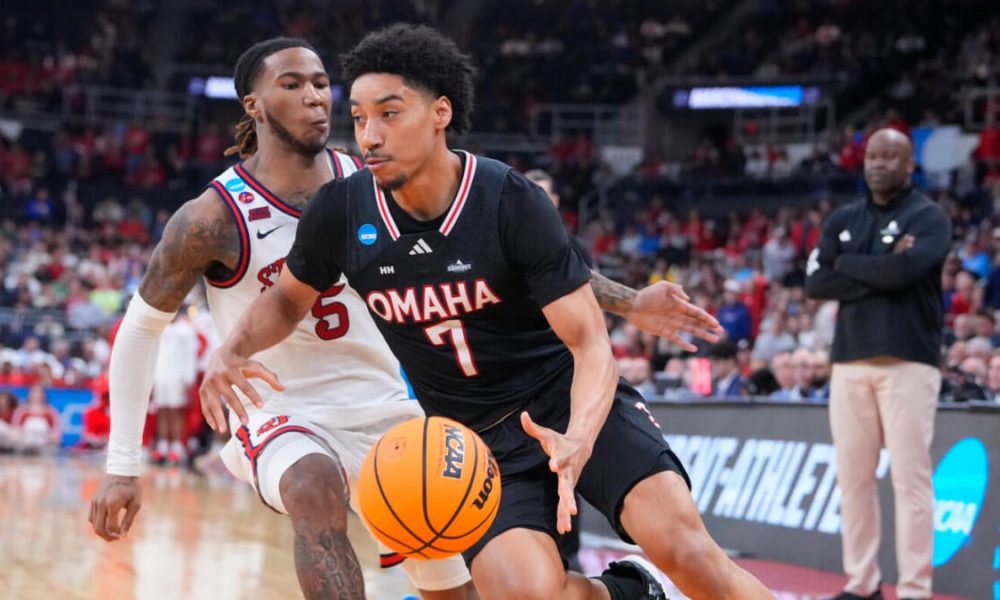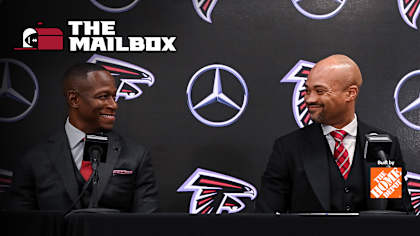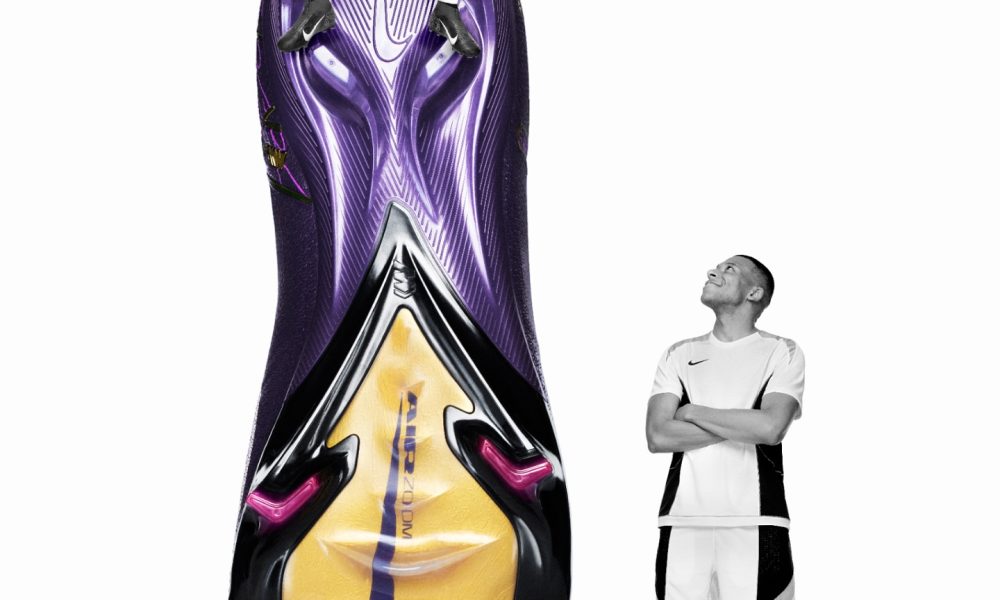NIL
USF



The Thirsty Buffalo Brewing Company added a new beer to its collection in February— a USF-themed Brahman Golden Ale.
Part of the beer’s proceeds go to the Fowler Avenue Collective, USF’s name, image and likeness collective, in an effort to support student-athletes through NIL funds.
Two months after its launch, the beer has already generated around $2,000 for the collective, said Thirsty Buffalo co-founder Mike Bishop.
“I love USF sports,” Bishop said. “I will do anything I can do to help.”
But the brewery partnership wasn’t chosen at random — a former Bull fermented the idea.
Bishop is a USF finance alumnus who graduated in 2006 and later got a degree in brewing arts from the Siebel Institute of Technology in Chicago.
Related: USF students trade textbooks for taste tests in these classes
He founded Thirsty Buffalo with his wife Erin in 2023, with the company’s headquarters in Land O’ Lakes and a factory in Odessa.
But USF always stayed close to his heart.
A good friend of his, Andy Taylor, is a director for the USF Alumni Association.
When Taylor heard the Fowler Avenue Collective was considering a brewery partnership, he “immediately” put his friend Bishop in contact with Will Turner, the collective’s fan engagement director.
Turner said USF’s NIL collective started idealizing the project in 2023, after the University of Cincinnati’s NIL collective, Cincy Reigns, launched a light lager to support student-athletes with part of its proceeds.
The Fowler Avenue Collective gets 10% of each Brahman Golden Ale sale, he said.
All of the money the collective gets is put into a “big pot” that is distributed to student-athletes, Turner said.
The brewery and the collective worked together to negotiate the percentage, and Bishop said it was a “very fair” arrangement.
Turner said the beer, with a six-pack costing up to $13.99, is a way for the community to support student-athletes through a different avenue and at a lower price.
“The big thing is, and this is gonna sound so cliche, but people like to drink,” Turner said.
The collective sells T-shirts ranging from $25 to $75. However, Turner said not everybody wants to buy merchandise with athletes’ names, especially when they are often transferring schools.
“The beer is kind of more of a blanket way for folks to support and still put money back in the collective without necessarily having to commit to merchandise,” Turner said.
Related: USF women’s basketball loses four players to transfer portal

The can, with a bull in the center, displays the phrases “Join the stampede,” which USF uses for promoting school spirit and athletics, and “Come to the Bay,” used to recruit student-athletes.
But the USF essence didn’t stop at the can.
Bishop said the Brahman Golden Ale was “entirely” created with sports in mind.
“When you’re at a tailgate or you’re at a USF basketball game, you want something light, you want something crispy,” Bishop said. “You don’t want anything super heavy.”
Bishop said the beer has a good balance of hops and malt — making it clean, light and “easy to drink.”
“Even if you don’t necessarily drink beer all the time, you’re still very open to trying it,” he said.
Bishop said he “could have made it” a blind, white or clean ale. But he ultimately chose a golden ale for people to associate it with USF’s “green and gold” theme.
At the USF Tampa campus, the beer is “slowly growing” in distribution.
The Brahman Golden Ale has been available at the on-campus BurgerFi on tap for around a month.
Bishop said he tried getting the beer to the Yuengling Center for basketball games, but was told he had to wait until Compass Group makes its way to campus.
Last year, USF announced it would change its athletics concessions providers from Aramark to Compass Group’s Levy. The transition is set to take place over the summer.
Related: USF’s new dining, facilities partner has a checkered past
Bishop said he is also in contact with Raymond James Stadium’s representatives to get the Brahman Golden Ale available at USF football games.
“How cool is that, if you’re watching USF football and you realize you can buy this beer, and a portion of that goes towards helping the athletes there?” he said.
Bishop said he is excited to see how his product will align with school spirit in the upcoming football season.
“People are always looking for ways to feel good about what they’re purchasing,” he said. “And that sometimes is pounding a beer with the USF bull on it.”
NIL
Joel Klatt names college football powerhouse making a ‘big mistake’
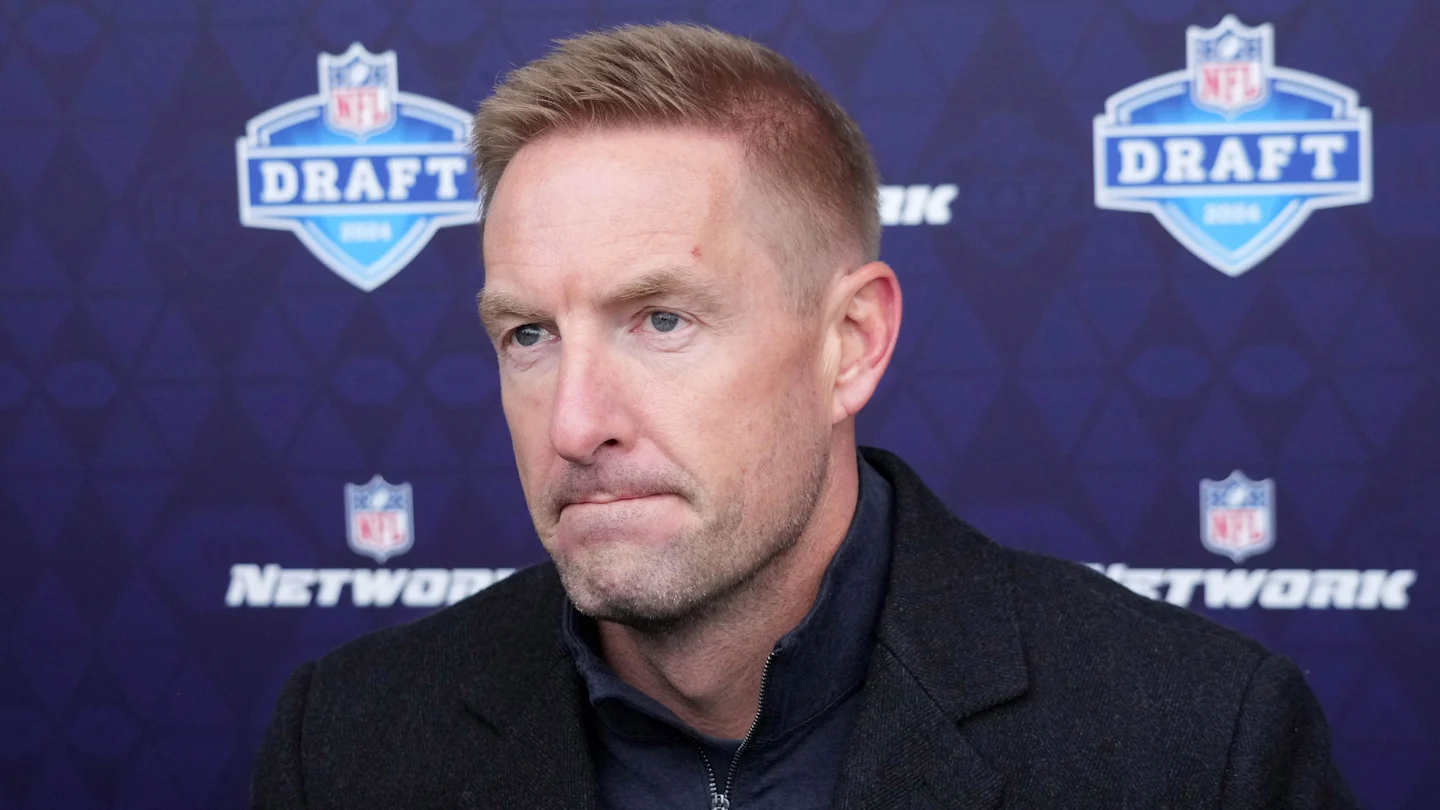
The College Football Playoff selection committee delivered a stunning blow to a prominent 10-win program on Sunday by excluding the team from the 12-team field. In response to the snub, the university announced it would decline any bowl invitation and end its season immediately.
This unprecedented move by the athletic director and head coach has drawn sharp criticism from national media figures. The leadership group felt the playoff spot was stolen after weeks of being ranked safely inside the bracket, leading them to opt out rather than play in a consolation game.
Notre Dame was positioned at No. 11 in previous rankings but fell out of the bracket in favor of the Miami Hurricanes. The Fighting Irish subsequently withdrew from the postseason, a choice that has sparked a significant debate regarding the culture of the sport.
Joel Klatt Labels The Decision A Big Mistake
Fox Sports college football analyst Joel Klatt addressed the controversy on The Joel Klatt Show, labeling the decision a significant error in judgment. Klatt argued that bypassing the postseason is an emotional reaction that negatively impacts the roster’s development. While the frustration in South Bend is palpable following the committee’s decision, the analyst believes the historic program is mishandling the situation.
Klatt outlined three primary concerns regarding the choice to pack up for the year. His first point focused on competitive development. Bowl preparation typically offers teams 15 extra practices, which are crucial for younger players. Klatt questioned how forfeiting this time helps the team prepare for the 2026 campaign.
“Bowl practice is where you develop for the next season,” Klatt said. “So, I don’t understand how just saying like, ‘No, we’re done with that,’ helps you for next year.”

The analyst also suggested the move appeared rooted in bitterness toward the selection process and the network broadcasting the games. He noted that the decision feels “petty” if it is based on anger regarding the weekly rankings reveal. Klatt emphasized that a program with such high stature should rise above such feelings.
“I think that that decision was born out of an emotional reaction rather than a disciplined response,” Klatt said. “And those two things are very different.”
Finally, Klatt directed a message to the athletes who may have played their final down of football. He warned that players might look back on this choice with regret. He stressed that athletes have a finite number of opportunities to compete at the highest level and should not artificially create a finish line.

Klatt also criticized the leadership strategy behind the choice. He compared the situation to parenting, noting that adults should intervene when young people react out of hurt feelings. He argued that leaders must prioritize logic over immediate emotional responses. ESPN analyst Paul Finebaum also took aim at the Irish fan base for their reaction to being left out of the playoff.
“I wouldn’t have asked the players what they wanted to do because they feel hurt,” Klatt said. “You don’t want to respond with your emotions. You want to respond with your reason and logic.”
Read more on College Football HQ
NIL
Josh Pate questions inclusion of Group of Five in CFP, suggests a G5 Playoff
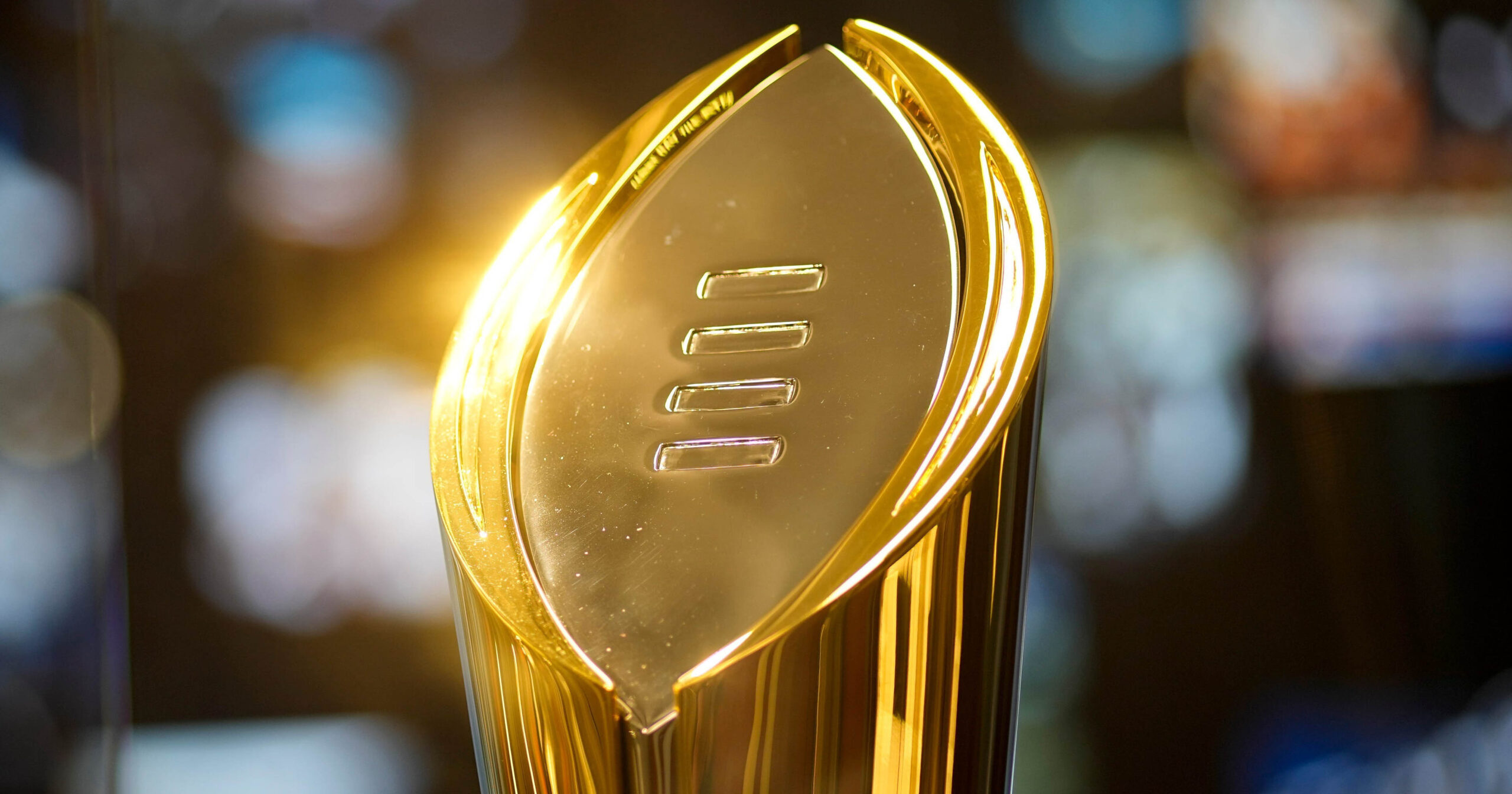
One of the biggest storylines of this edition of the College Football Playoff is the inclusion of two champions from the Group of Five, with No. 11 Tulane in out of the American and No. 12 James Madison in out of the Sun Belt. That has caused quite a lot of questions and criticism, with a suggestion now made to potentially fix that by Josh Pate.
During his reaction show to the reveal of the playoff on Sunday, Pate touched on the topic of the inclusion of the G5. He wondered about that aspect of this model altogether, as he thinks better contenders aren’t making the field for teams who may have next to no chance in the CFP.
“I do think a lot of people have started to throw around one of the proposals that we’ve made on the show, and that is, if you’re going to make the playoff, shouldn’t you at least have a minimum baseline ranking? I don’t know what that ranking would be. Shouldn’t you have to be Top-15? Shouldn’t you have to be Top-20?” said Pate. “A lot of people are looking at the fact that we’ve got two G5 teams in here, and, of course, that’s a joke. That’s a complete joke. It’s an utter disgrace to the overall spirit of what this thing is supposed to be about, that I got a team like Notre Dame sitting at home. Notre Dame could legitimately make a run to win a national title. They have that maximum capability. They’re going to sit at home, so that we made room for a team to be a three-plus touchdown underdog in Eugene, Oregon. So, yes, even the most diehard of G5, Cinderella supporters out there understand, from a pure principle standpoint, this makes no sense. And so I do think something will be done to address that.”
Pate addressed those same points later on in the show. With respect to the seasons just had by Tulane and James Madison, the fact is that they will be massive underdogs respectively in their first-round games against Ole Miss and Oregon, with little chance of them winning even a game, let alone multiple, as part of the College Football Playoff. That is why he doesn’t understand their insertions, even if that’s how the bracket is built, as teams like this from the Group of Five are unlikely to compete with these level of teams from the Power Four.
“Now we have to get uncomfortable. Now we have to broach the subject everyone is talking about. So, we have two G5 teams in the playoff – Tulane-Ole Miss, JMU-Oregon…So, people have some really, really strong thoughts on this. I’ve had strong thoughts on this for a while. I’ve told you for a while. It makes no sense that college football is structured the way it is, for many reasons, but it makes no sense that college football pretends that 136 teams are playing the same sport. It’s so obvious they’re not,” said Pate. “You got to get some smart people in the room to understand we can restructure the playoff, or we can rebuild the playoff entirely actually, to where you don’t have G5 inclusion in the main playoff, and still have a very, very nice, revenue-producing product that is exclusive G5. You know, a world where JMU can actually win the title, or Tulane could actually win the title. Now, everybody, logically, watching this or listening to this knows Oregon is not playing the same sport at JMU. Everybody knows that Ole Miss is not playing the same sport as Tulane. Everybody knows that. But, for some reason, we’re still forced to pretend that they are when it comes playoff time. So, you can say what I just said without having disdain or hate in your heart for the G5. I feel the total opposite! I love G5 football. I’d like to build a world, I’d like to build an ecosystem where it thrives, not cutting it out of this system to watch it die. That’s not how that has to happen.”
“The mental gymnastics that proponents of G5 inclusion put themselves through are so mind-numbing that I just remove myself from the conversation. Because the way I look at it is no G5 team is ever going to win this national championship. Certainly, they’re not. So, like, it’s never like they’re going to make a run in the playoff. The worst that happens is it takes away and robs us of what would be far more premier first-round playoff games, and then JMU and Tulane will get disposed of in the first round because they’re far inferior teams and then we’ll move on about the playoff. So, it’s not like I’m going to get burned,” Pate continued. “The argument you’re making is a very bad faith argument, if you’re making this one – ‘Well, you know, upsets have happened before!’. It’s so far away from the point that it doesn’t even deserve a reply, but here’s the reply. I don’t care if JMU goes and beats Oregon. It doesn’t disprove my point. My point is they don’t deserve inclusion in this format…The point there is we’re not playing the same sport. We’re not looking at the same sport…My point is not even that it’s impossible for them to pull the upset if they get in the playoff. My point is they shouldn’t be in the playoff to begin with because the road that they took looks way different than the road these other teams have to take.”
This comes a year after, in the original expanded format, Boise State (12-1), out of the Mountain West, earned a bye into the quarterfinals of the CFP. Now, a season later, Tulane (11-2) is in as the highest-ranked of the non-power conference champions after winning the American, while James Madison (12-1), due to the low rating of Duke (8-5) as the winner of the ACC Championship, managed to get in as well after winning the Sun Belt.
That all may have sounded like a lot of negativity for the G5, but, from there, Pate offered suggestions to better include them in the process of college football. He did, to a lesser extent, suggest the idea of relegation, with poor power teams moving down to make space for deserving mid-majors. His biggest idea, though, was creating a playoff specifically for the Group of Five, which Pate knows they would be able to market and sell, instead of them playing as part of the CFP.
“With all this money floating around right now, people are insane if they don’t think a G5 Playoff would sell, and sell big. Do you understand how desperate other networks are for quality postseason college football inventory?…You don’t think, if we took a package of G5 playoff games, and put them on any network, that it wouldn’t sell? Of course it would,” said Pate. “Invest in a G5 Playoff. Everybody wins. I’m not trying to box you out, by the way…So, the money is there to figure this out.”
“The argument it always boils down to is a fundamental argument. No one really looks at JMU and Tulane in the playoff and thinks to themselves, yep, purely from a competitive standpoint, this makes sense to me. You don’t think that…You want to make it because you want to make it. I’m talking about removing that lens, and looking at it purely from a logic-based, competitive standpoint,” continued Pate. “No one looks at this and thinks it makes sense, so the argument doesn’t come to that. The argument comes to, if we’re not involved in the College Football Playoff, we can’t make enough money to survive. And, what I’m saying is there is plenty enough money floating around the world of college athletics to get it figured out. That’s my point on that whole thing, and it should have long ago gotten figured out but it still hasn’t.”
This has now absolutely been a major talking point through the first two years in the expansion of the CFP. However, because of that, one way or another, Pate expects that we could see a change in that process because of it, as the playoff could be better balanced.
“I do think that there are changes coming,” said Pate. “I do think that that committee, just like they did this past year? They had one round, and then they adjusted their terms. And now they’ve had another round, and I think they’re going to adjust their terms again.”
NIL
Robert Griffin III sends strong message after major football program declines bowl game bid

The 2025 College Football Playoff field was unveiled at noon EDT on Sunday.
Of the many difficult decisions made by the College Football Playoff committee, none was more notable than its decision to award bids to Miami (No. 10), Tulane (No. 11) and James Madison (No. 12) over Notre Dame, which sat at No. 11 in the final College Football Playoff rankings.
In response to the committee’s decision to exclude it from the College Football Playoff, Notre Dame declined any potential bowl bids as a form of protest.
“As a team, we’ve decided to withdraw our name from consideration from a bowl game following the 2025 season. We appreciate all the support from our families and fans, and we’re hoping to bring the 12th national title to South Bend in 2026.”
Notre Dame Football (@NDFootball on X)
— Notre Dame Football (@NDFootball) December 7, 2025
The decision sparked an online discourse about the potential precedent for future dismissal of bowl bids in college football. One proponent of Notre Dame’s decision was former Baylor and Heisman-winning quarterback and current FOX Sports college football analyst Robert Griffin III.
“I don’t blame Notre Dame one bit for deciding not to play in a Bowl Game when they should have been playing for a chance to win the National Championship in the College Football Playoff.”
Robert Griffin III (@RGIII on X)
I don’t blame Notre Dame one bit for deciding not to play in a Bowl Game when they should have been playing for a chance to win the National Championship in the College Football Playoff. pic.twitter.com/TgB0kAn85r
— Robert Griffin III (@RGIII) December 7, 2025
Declining a bowl bid was not the only step in Notre Dame’s efforts to secure a better future for the program. Ross Dellenger of Yahoo Sports and On3 reported that Notre Dame is guaranteed a College Football Playoff bid if it is ranked No. 12 or higher in the final poll beginning in 2026, per Notre Dame athletics director Pete Bevacqua.
“A newsy wrinkle from Bevacqua: As part of an MOU signed last spring, Notre Dame is assured of a CFP berth if it is ranked in the top 12 starting next year.”
Ross Dellenger (@RossDellenger on X)
A newsy wrinkle from Bevacqua: As part of an MOU signed last spring, Notre Dame is assured of a CFP berth if it is ranked in the top 12 starting next year.
If this year’s situation unfolds next year, the final at-large team (Miami) would have gotten bumped for No. 11 Notre Dame.
— Ross Dellenger (@RossDellenger) December 7, 2025
Notre Dame is one of three Power Four programs to decline a bowl bid in 2025. The other two are Iowa State (8-4) and Kansas State (6-6), both of which opted out of bowl bids in the wake of head coaching changes.

NIL
$2.1 million SEC quarterback announces he’ll forgo NFL Draft, return for 2026

One College Football Playoff program just received some major positive news ahead of their postseason run. One of the many flaws in the current CFB calendar is that players really have to make decisions on their futures before the playoffs are over, since they could be playing well into January — and past the deadline for transferring. Then, there’s the NFL Draft and that process to think about.
Luckily for Texas A&M, they have full assurance that their star quarterback, Marcel Reed, is fully locked in on the Aggie program amid any portal offers or professional attention. As part of an interview with former Heisman Trophy winner Robert Griffin III, Reed confirmed his intention to remain with A&M program next fall, returning for his junior season. On a recent episode of Griffin’s podcast, Outta Pocket, Reed as was asked point-blank whether he is coming back to Texas A&M for the 2026 season. His response:
“I’m coming back,” he said with a head nod. “I’ll be back.” Griffin went on to comment that, from his view, A&M seemed like the ideal home for Marcel Reed.
“I do too,” Reed responded, agreeing that A&M is the perfect fit. “I mean, I got offers after my freshman year, ” he added. “I thought that this was the best place to be. I didn’t think there was any reason to leave Texas A&M. I have the job and it’s mine to lose. But like, there’s no reason for me to leave.”
Marcel Reed stats, NIL valuation

The good folks at On3 put together a formula for calculating a player’s NIL and roster value based on real reporting on player compensation plus social media exposure and overall talent level. According to their esteemed metric, Marcel Reed checks in with a $2.1 million NIL evaluation. That puts him No. 13 among current college football players and No. 17 among all college athletes.
As a starting quarterback for one of the top 10 teams in the nation this season, you wouldn’t think there’s much reason for Marcel Reed to transfer away from Texas A&M. However, after the stellar year he put together, NFL scouts certainly have him on the radar.
Across 12 regular season games, Reed threw for just under 3,000 yards and will almost certainly eclipse that milestone in the postseason. He also tossed 25 touchdowns vs. just 10 interceptions and added another six touchdowns as a runner to give him more than 30 on the year. Reed’s rushing tally is currently 466 yards. Easily one of the best dual threat quarterbacks in the country, Reed projects to return to a contending Aggie squad in 2026 as a Heisman Trophy frontrunner and potential NFL first round pick,.
More on College Football HQ
NIL
Dick Vitale finds College Football Playoff selection committee far from awesome, baby

Dickie V knows football
Dick Vitale is well-known and loved as a passionate broadcaster and follower of college basketball. His boundless enthusiam and endless catch phrases have dominated college basketball for several decades. But Vitale pretty clearly knows the gridiron as well, and directed some harsh comments on Sunday to the College Football Playoff selection committee. The topic of discussion was Notre Dame, long a Vitale favorite, as he acknowledged 11 family members who have graduated from the school.
Notre Dame’s rough situation
Notre Dame was ranked as the first team out of the College Football Playoff. The two biggest points of contention for the Irish and their fans are that three-loss Alabama remained ahead of them despite a 28-point loss in the SEC championship game, and that Miami– consistently ranked behind Notre Dame in the CFP weekly rankings– somehow jumped them in the final week despite neither team playing a game.
Vitale speaks out
Vitale shared a video to social media with comments he directed straight toward the CFP selection committee.
I’m really having a tough time. Every Tuesday for five consecutive weeks, you post on ESPN, the teams you think, the top 12 that would be eligible at that time to qualify for the Playoffs. Every week, EVERY, not two of the weeks, but all five weeks, you had Notre Dame over Miami. You had Notre Dame in there every week. How logically do they drop out on the last week, when they’ve done nothing in terms of losing a game during that period? Miami lost two games to unranked teams. I have a real tough time with that…. How do you explain the five weeks of having Notre Dame there and then bouncing them? They did zilch in terms of anything in causing that to happen. They didn’t lose a game. They blew out everybody they played, and the bottom line is they got a raw deal. They got a raw deal. Those kids belong in the Playoffs.
Dick Vitale
Irish reaction
Despite the emotional pitch of his video– and Vitale acknowledges that he’s a fan of the Irish– it’s hard to argue with Vitale’s fundamental talking points. Notre Dame pretty clearly felt the sting of CFP exclusion, as the Irish then turned down non-CFP bowl berths, indicating that for the Irish, the season ended up as CFP or bust. But even if the Irish are outside the Playoff, they do have one of the most notable voices in college sports indicating that their CFP exclusion is a difficult-to-justify stance that wrongs an excellent team.

NIL
Every college football team that declined their bowl game on Sunday
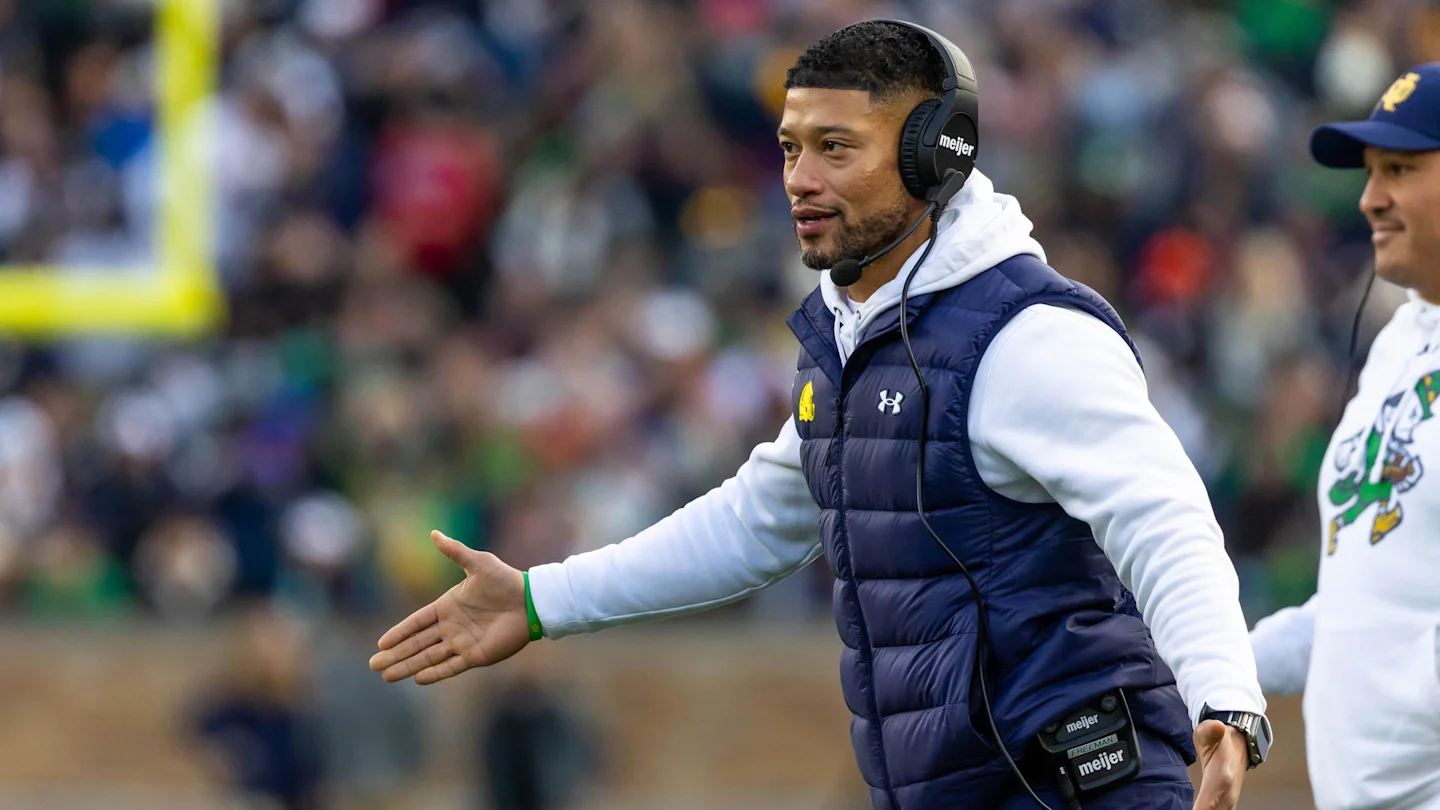
Years ago, schools basically cued in line to plead for a spot in a post-season bowl game. Of course, that was an era before every breakfast cereal, motor oil, or obscure mortgage company was sponsoring its own personal bowl game. But Sunday emphasized a growing trend with a number of teams saying ‘thanks, but no thanks’ to bowl berths on Sunday. The final count included at least 10 teams that turned down bowl berths.
The denials sprang from a variety of potential reasons– from pouting over exclusion from the College Football Playoff to teams not wishing the dive into postseason play in the midst of coaching changes to teams that had given up hope at a bowl and moved on with the offseason. But Sunday’s massive exodus of teams NOT playing in bowls certainly made some college football history.
The Wrath of the Irish
Notre Dame’s bowl denial will probably draw the most attention. The Irish finished one spot out of the College Football Playoff, and accordingly decided that they would pass on the gamut of lower bowls. Notre Dame was purportedly offered a spot in the Pop-Tarts Bowl to play the team ranked behind them in the CFP rankings, BYU, but turned it down flat.
All of college football (and even some college basketball celebrities) weighed in on the propriety of the Irish bowl declination, but it’s a massive move that could reverberate throughout future bowl seasons.
— Notre Dame Football (@NDFootball) December 7, 2025
Two Big 12 Coaching Shifts
Kansas State and Iowa State each turned down bowl invitations. In both cases, there are coaching transitions underway. Iowa State lost Matt Campbell to Penn State and is replacing him with Jimmy Rogers. Kansas State saw Chris Kliemann retire and Collin Klein replace him.
Despite the business excuse, the Big 12 made it clear that the decision was not a popular one at the league level. Both schools were fined $500,000 for turning down bowl bids.
The Big 12 fines Kansas State and Iowa State $500,000 each for opting out of a bowl. pic.twitter.com/TLQcgkB6a1
— Ross Dellenger (@RossDellenger) December 7, 2025
Bowl Denial Dominoes (or Sunday Choas for the Birmingham Bowl)
While the NCAA had exactly the number of teams with six or more wins that it needed to fill the bowl vacancies, these three teams declining bowl berths caused the bowls to have to dip into the pool of 5-7 teams. A multitude of 5-7 teams declined bowl bids before Appalachian State finally completed the bowl picture by agreeing to play Georgia Southern in the Birmingham Bowl.
At least seven teams were reported to have turned down last-minute bowl invites off of 5-7 seasons. The list includes Florida State, Auburn, UCF, Baylor, Rutgers, Temple, and Kansas. The 11th hour bowl chaos led to more than a few jokes online. While the 82nd bowl berth was finally filled, at least 10 teams passed on postseason play on a memorable Sunday.
We interrupt for a Public Service Announcement: if you’re a football team (must have at least 11 players) & would like to play in a really cool bowl game & be on ESPN vs. Georgia Southern, please show up at Birmingham’s Protective Stadium by 1 pm Dec. 29th kickoff. Thank you
— Brett McMurphy (@Brett_McMurphy) December 8, 2025
-

 Rec Sports2 weeks ago
Rec Sports2 weeks agoFirst Tee Winter Registration is open
-

 Rec Sports2 weeks ago
Rec Sports2 weeks agoFargo girl, 13, dies after collapsing during school basketball game – Grand Forks Herald
-

 Motorsports2 weeks ago
Motorsports2 weeks agoCPG Brands Like Allegra Are Betting on F1 for the First Time
-
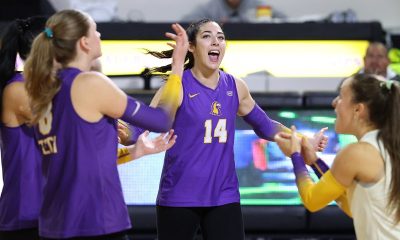
 Sports3 weeks ago
Sports3 weeks agoVolleyball Recaps – November 18
-

 Motorsports2 weeks ago
Motorsports2 weeks agoF1 Las Vegas: Verstappen win, Norris and Piastri DQ tighten 2025 title fight
-
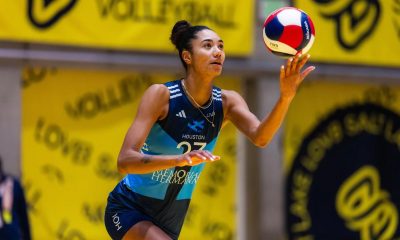
 Sports2 weeks ago
Sports2 weeks agoTwo Pro Volleyball Leagues Serve Up Plans for Minnesota Teams
-

 Sports2 weeks ago
Sports2 weeks agoUtah State Announces 2025-26 Indoor Track & Field Schedule
-
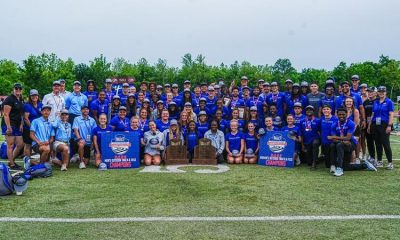
 Sports2 weeks ago
Sports2 weeks agoSycamores unveil 2026 track and field schedule
-

 Motorsports2 weeks ago
Motorsports2 weeks agoRedemption Means First Pro Stock World Championship for Dallas Glenn
-

 Sports2 weeks ago
Sports2 weeks agoTexas volleyball vs Kentucky game score: Live SEC tournament updates
















